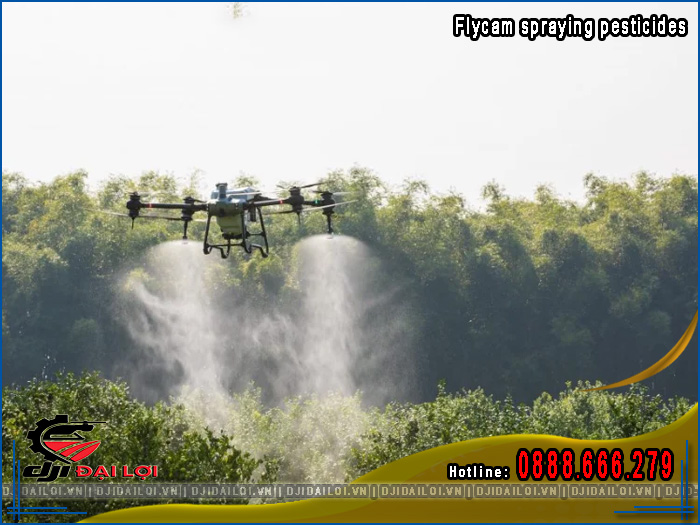Amid labor shortages and rising wages, spraying drones are becoming a practical solution to lower costs, improve efficiency, and reduce chemical exposure. No longer a “luxury” for large farms, they are now a strategic investment. However, the high initial cost makes many hesitate: Should you really buy one? Let’s explore actual needs, mindset barriers, and return-on-investment potential to help you decide.

Buying a flycam spraying drone shouldn’t be based on impulse. To evaluate if it’s “worth the money,” farmers should consider at least five essential factors:
From these factors, it’s clear: buying a drone isn’t a trend-following move. It must be based on a careful assessment of cost, benefit, and user capability - laying the foundation for deeper analysis below.
Many farmers used to manual spraying often ask: Is a drone really better than a person? Let’s break it down by cost, time, effectiveness, safety, and precision.
A 2023 study by the Center for Application of Scientific & Technological Advances (HCMC) showed drones reduce chemical exposure by 90%, labor needs by 70%, and increase pest-control efficiency by up to 30% compared to manual spraying.
In short: for mid-sized farms or tough terrains, drones clearly outperform traditional methods in safety and efficiency.
No tech is perfect for every scenario. With flycam spraying drones, users need to weigh both standout advantages and potential risks for optimal use.
Real-world example: A 5-hectare rice farmer in Long An invested 180 million VND in a DJI T20. After two seasons (own use + 10 ha of rental spraying), they earned over 45 million VND per season - full ROI in just 2 crops.
Bottom line: Drones deliver real gains in productivity, safety, and cost-efficiency - but only with proper planning and skill development.
Not everyone needs or should buy a drone. Below are real-world scenarios by farm size, crop type, and business model to help you decide when to buy, rent, or partner:
Avoid buying solo. The investment is hard to recover. Instead:
Buying a mid-range model (T20, XAG P20 at 130–180 million VND) is recommended. You can spray 200–300 times/year - cheaper than renting. Train 1–2 operators internally.
Highly recommended to buy 1–2 drones for dual use (your own crops + external rental).
Some service providers now earn 10–20 million VND/month per drone.
E.g. coffee, cashew, durian, wet rice, dragon fruit…
Drone use is ideal with 4–6 spray cycles per season. It saves labor and prevents mistimed sprays.
If your land is steep, swampy, or divided into plots, drones help avoid accidents and save time.
Can’t afford a drone yet? Rent one for the first 2 seasons while learning to fly and assess results before investing from season 3 onward.
Many assume drone prices are too high. But an ROI (return on investment) analysis tells a different story:
|
Item |
Cost (VND) |
|---|---|
|
Flycam spraying drone (T20) |
160 – 180 million |
|
Spare batteries (2–3 units) |
15 – 20 million |
|
Fast charger |
5 – 7 million |
|
Training + licensing |
3 – 5 million |
|
Total investment |
~200 million |
|
Scenario |
Financial benefit |
|---|---|
|
Self-spraying 5 ha x 3 sprays |
Saves ~6–7 million/crop |
|
Rental service for 10 ha |
Earns ~12–18 million/crop |
|
Total after 2 crops |
18–25 million/crop |
Payback period: 4–5 crop seasons (1.5–2 years with consistent use). With service rentals or training, ROI can drop to under 1 year.
Tip: To speed up ROI, avoid overspending on expensive accessories. Choose popular models with easily replaceable parts.
The pesticide-spraying flycam drone is a major step forward in agricultural mechanization - boosting productivity, lowering costs, and improving operator safety.
But the return on investment only comes when users choose the right model, operate correctly, and maximize usage. For small farms or those not financially ready, renting or group-buying may be better.
Evaluate your costs, needs, and goals carefully to make a smart, sustainable investment.